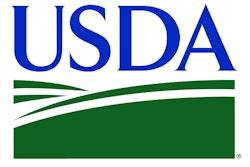The trucking industry is getting ready to invest in new technologies and tighten shipping procedures in order to meet the Obama Administration's new food safety regulations.
In December of 2010, Congress passed the Food Safety Modernization Act (FSMA), which mandated improvements across the food safety system. For the transportation industry, these changes include a requirement that the Department of Health and Human Services (HHS) write regulations for the sanitary transportation of food to which truckers must adhere.
According to the new law, HHS must also "improve tracking and tracing of processed foods and fruits and vegetables that are raw agricultural commodities in the event of a foodborne illness outbreak."
Trace back allows a company to issue a timely recall for any products suspected to be contaminated, and for investigators to figure out exactly where a contaminated product came from.
For truckers, improving traceability means using the latest technologies, such as Global Positioning Systems to keep a record of where every pallet of food is at any given moment, as well as where it came from and where it is distributed, reported FleetOwner last week.
Such tracing technologies have now improved to the point where companies can keep track of not only where a product is, but also the temperature it's stored at, among a wealth of other information.
"Technology is actually pretty good," said Dr. John Ryan, president of Ryan Systems, who has spent more than 25 years developing high-tech quality control systems. "You can use sensors to get temperature readings at the pallet level and you can use GPS to track the load and cellular technology to transmit the temperature data in real time. We can also use sensors to detect tampering or find explosives."
Tracking food at this level of detail will also allow companies to cut down on wasted fresh product that can become spoiled in transit. Currently, about 5 to 7 percent of fresh produce is lost during transportation.
"Produce with the shortest shelf life should be delivered first and through the shortest route," says Ryan, "in order to give that retailer the most shelf life possible. Technology makes that doable."
A set of Guidelines for Sanitary Transportation of Food was issued in 2005. The Department of Health and Human Services has yet to publish its protocol for food transportation as mandated by FSMA.
Source: Food Safety News

















